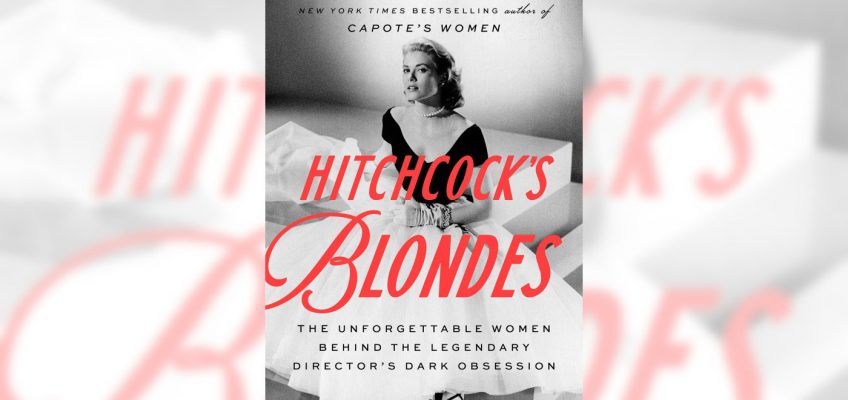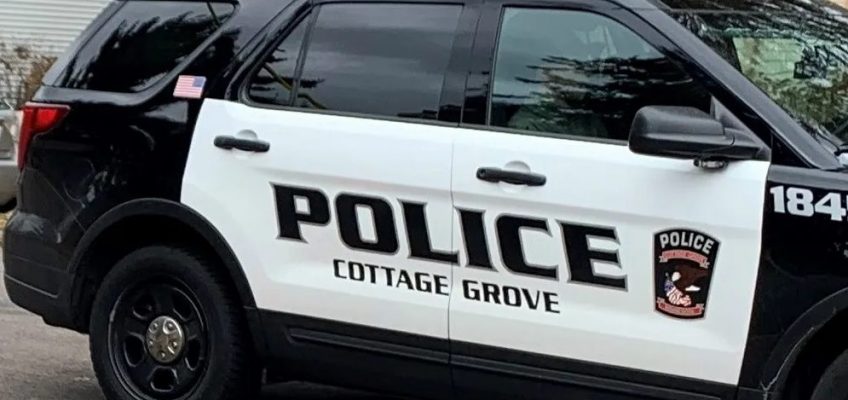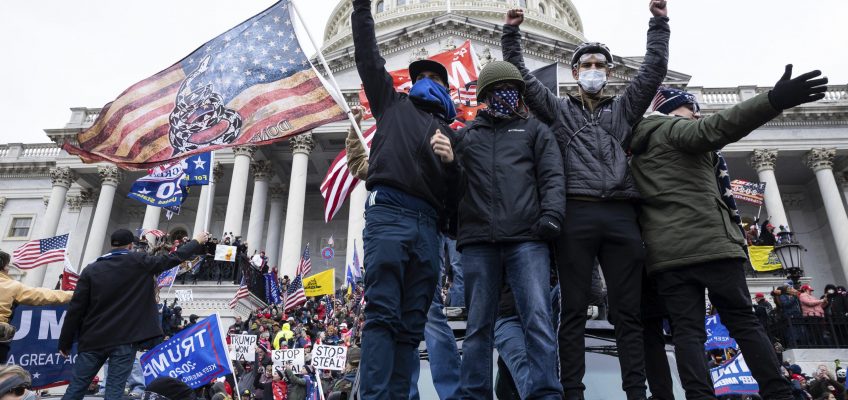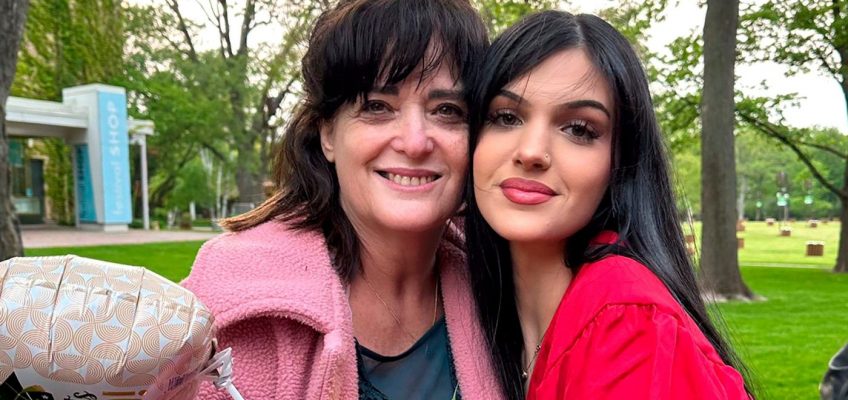As biographer Laurence Leamer settled in front of the television to research the films of Alfred Hitchcock, he realized he had a problem.
“I started watching this as an author writing the book and trying to get material,” Leamer says on a recent call. “And after five minutes, his stuff is so fascinating I forget that and just watch it because I’m enjoying it so much.
“That’s how good he is,” he says. “That’s how he involves you. He knows just what he’s doing.”
Leamer persevered and “Hitchcock’s Blondes: The Unforgettable Women Behind the Legendary Director’s Dark Obsession” arrived on Tuesday, Oct. 10.
In it, Leamer explores the work of Hitchcock and eight actresses with whom he worked, from June Howard-Tripp in 1925’s “The Lodger: A Story of the London Fog” to Tippi Hedren in “The Birds” and “Marnie” in 1963 and ’64.
In between, Leamer explores Hitchcock’s work with Madeleine Carroll (“The 39 Steps,” “Secret Agent”), Ingrid Bergman (“Spellbound,” “Notorious,” “Under Capricorn”), Grace Kelly (“Dial M for Murder,” “Rear Window,” “To Catch a Thief”), Kim Novak (“Vertigo”), Eva Marie Saint (“North by Northwest”), and Janet Leigh (“Psycho“).
Hitchcock’s life and career has been examined in numerous books from before and after his death at 80 in 1980. His infatuation with his leading ladies, particularly the blondes and his odd, sometimes cruel manner with them are well known.
But Leamer is the first biographer to shift the focus from Hitchcock in the foreground to zoom in on the women with whom the director achieved some of his greatest works.
“Hitchcock’s Blondes” is the second in a planned trilogy about male creative geniuses and their female friends, colleagues and confidants. Leamer, 81, is currently working on a book about artist Andy Warhol and his many muses.
The first book in his series, “Capote’s Women: A True Story of Love, Betrayal, and a Swan Song for an Era” arrived in 2021. Its story of writer Truman Capote and the New York City circle of women in which he moved arrives as the second chapter of producer Ryan Murphy’s FX anthology series “Feud” in 2024.
Q: Do you remember when you first became aware of Alfred Hitchcock?
A: He’s so much a part of our culture, I don’t even know. You know, if you go on Amazon Prime and plug in Hitchcock, there are over 40 of his films you can watch today. That’s the magnitude of that guy’s accomplishments.
Q: How did you arrive at the framework of the book, focusing on these eight women?
A: Well, chronology is God’s gift to a writer. You’d better have a damn good reason to do away with it. So the chronology is his life and the blondes are pretty obviously the candidates for telling it.
When I write a book, I always write the ending in my head and then I try to write the book that would justify that ending. And that’s what I did here. I wanted the ending to be that AFI tribute (in March 1979). I wanted the audience at that point, the readers, to appreciate his greatness, and also the dark part of it as well. And to appreciate the actresses as well.
Q: Three of the actresses are still living. Tippi Hedren doesn’t do interviews but you were able to talk with Eva Marie Saint from ‘North by Northwest’ and Kim Novak from ‘Vertigo.’ What was that like?
A: Eva Marie Saint was fabulous. You know, she’s 99 years old now, living by herself in her apartment. She wants to have her own life. I think that’s incredible.
Q: From her chapter in the book, she seems to be one of the most grounded of the Hitchcock actresses.
A: She was grounded, but she is calculating. And I don’t say that as a criticism, just the opposite. She knew the life she wanted early on. She had some success in television. Got a little apartment. She was lonely, she wanted to marry. She didn’t want to marry an actor. She married this producer. And they had the most wonderful marriage.
Then in her career, she loved her children. She liked to act, but when they were growing up, she’d do just one movie a year. She put her Academy Award statuette for ‘On The Waterfront’ in the closet and just forgot it. She really has immense character as far as I’m concerned.
Q: A lot of the stories of Hitchcock and the actresses are well known. I’m curious what your conversation with her provided that you didn’t already have?
A: She had some tidbits, but she’s told these stories many times. I found a few new things. It was just as much to get a real feeling of her emotionally. I think I wrote a much better chapter because I knew her in that way.
Q: Kim Novak, from your chapter on her, seems like perhaps the actress Hitchcock treated the worst. What was she like?
A: It’s inexplicable to me (how she was treated). He brings her up to luncheon and shows her his paintings, which he knows she won’t appreciate the way he appreciates them, and the vintage wine, which she doesn’t understand. Just to put her down. And the first day in the studio there’s this dead chicken attached to her mirror and Hitch and the other men standing around laughing at her.
She said she didn’t know what that was about. I don’t know what it’s about. It just didn’t make any sense to me. But it’s not a great thing to do to this vulnerable, insecure actress on the first day.
And then when she finished it, I think she deserved an Academy Award nomination because I think she’s magnificent. It’s a very difficult role. But Hitch put her down. Even when that putting down probably diminished the number of people wanting to see the movie.
Q: Was she candid and open about her treatment by him?
A: She really appreciated Hitchcock. She has nothing negative to say about it. It’s the best thing she did in her whole life, and she puts it in perspective.
Q: In recent years, there’s been a lot of discussion about how to appreciate art made by men with problematic histories. Might this book change Hitchcock’s reputation?
A: If the things about Woody Allen are true – and I don’t know if they are, but if they are, well, I wouldn’t want to watch his films, right? This stuff about Hitchcock isn’t at that magnitude, in my opinion. In the #MeToo times, people are just too easily dismissed, and I don’t think it’s fair to him.
There was a biographer of him, Donald Spoto, who just focused on the darkness, and that had a big impact on Hitchcock’s reputation. I don’t think that’s fair.
Q: Of the Hitchcock films you watched featuring these women, do you have a favorite you go back to?
A: It depends on what you want. I mean, ‘To Catch a Thief’ is just pure fun. You can’t beat that. ‘Marnie,’ the dark brilliance of that is irresistible. And ‘Psycho,’ I mean, there’s nothing like ‘Psycho,’ right?




